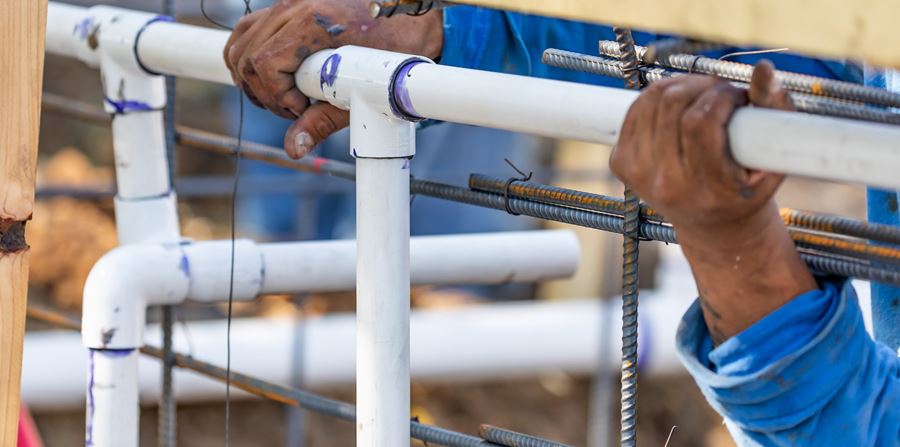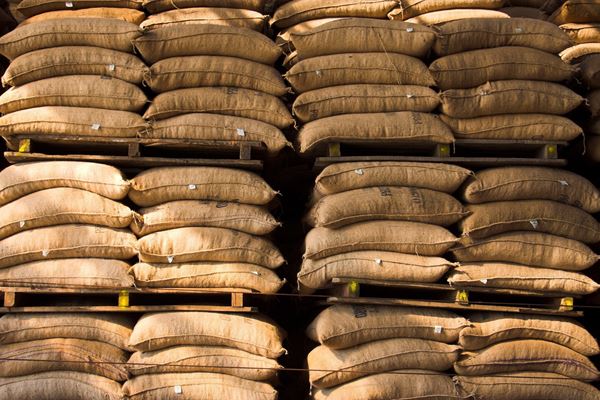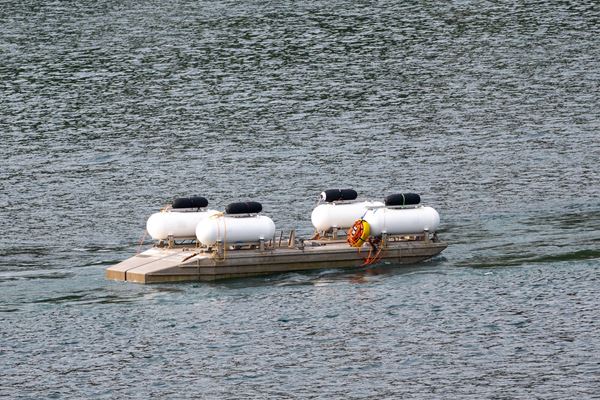Solvent Welding of PVC/CPVC Pipes

I was asked by some colleagues dealing with solvent-welded PVC (polyvinyl chloride) / CPVC (chlorinated polyvinyl chloride) pipe joints that were separating, why and how these PVC/CPVC pipe joints were becoming disconnected. Interestingly, these incidents my colleagues encountered happened in either new constructions or new repairs and were supposedly prepared by professional plumbers. So, how does solvent welding work and why does the separation issue seem to be more prominent in new constructions and new repairs?
To answer these questions, we first need to understand the process of solvent welding. To begin, conceptually, polymers can be perceived as an entangled mixture of long-chain molecules, similar to a bowl of spaghetti noodles. To achieve a good joint between two initially separated pipe surfaces, the long-chain molecules on each side of the mating surfaces will need to mingle and intertwine with their counterparts on the other side of the mating surfaces. This mixing or homogenization process, aka solvent welding, is what makes the joint structurally robust. However, to achieve this homogenous mixing, physically the glueing process requires the long-chain molecules on both sides to open up (expand/swell) and create space for the molecules from the opposing sides to migrate and entangle, and that is where the solvents come into play.
Solvents, particularly tetrahydrofuran (THF), are used to facilitate the softening, swelling, and slipping of the long-chain molecules for PVC/CPVC. Imagine adding olive oil to a bowl of cooked tangled-up spaghetti noodles; one is more likely to be able to pick and lift individual spaghetti noodle strands out of the originally tightly interlaced blob of noodles. On top of containing proper solvents to swell the polymer networks, the PVC/CPVC pipes' primers include some oligomers (polymer chains of shorter lengths) to act as linking molecules. So, the solvent welding process involves the migration of long-chain molecules from the two mating surfaces and shorter linking molecules in the primer/adhesive to intertwine with one another to form a new homogeneous layer of PVC/CPVC polymer network that connects the two originally separated pipe surfaces.
Optimizing PVC/CPVC Pipe Joint Strength
In the cases of the separated PVC/CPVC pipe joints mentioned above, they all exhibited interfacial failure between the applied glue and the joining pipe surfaces, meaning the applied glue only adhered to one surface, and, for whatever circumstantial reasons, not enough bonding was established with the other surface.
THF is a volatile solvent and leaving the bottle lid open will lead to depletion of this critical component. Logically, we can now envision that for the mixing and entangling of the polymer molecules to be effective, the amount of lubricating agent (i.e., the solvents) will need to be adequate. If the solvents are depleted over time and drop below a critical level, then the effectiveness of the joining will consequently suffer. When this fusing process is not sufficiently accomplished, then the likelihood of the joint failing, whether by way of interfacial separation, or cohesive failure of the glue layer, will increase.
Maximizing PVC/CPVC Pipe Joint Integrity
Now, with the understanding of how solvent welding works, the question becomes what can installers do to minimize the probability of failing or separating PVC/CPVC pipe joints? The key is to minimize the loss of solvents by keeping the primer or glue bottle lids closed. Frankly, most homeowners tend to keep the bottle lids closed when they work on joining PVC/CPVC pipes. On the other hand, professional installers, due to the frequency and number of joints to fuse in a job, are more likely to leave the lids partially open for the duration of the whole job, and therefore more likely to face the possibility of pipe joints coming apart.
The second practical means to monitor the concentration of solvents in PVC/CPVC primers and glues is to use peroxide test strips. It is well established that, upon contact with air, THF can form a 2-hydroperoxytetrahydrofuran peroxide within a short time. As peroxides can potentially be contact explosives, most chemical storage guidelines would recommend that THF not be stored longer than six months after opening, or one year after purchase to reduce the risk of explosion. For that reason, peroxide test strips are also frequently used in chemistry labs to detect/monitor the level of peroxide in THF. The higher the level of peroxide (specifically 2-hydroperoxytetrahydrofuran), the more THF has reacted with air. Understandably, this same practice can be used to monitor the freshness of PVC/CPVC primers and glues. Ultimately, anyone who uses primers or glues to join PVC/CPVC pipes should start adhering to the idea of three months, instead of three years as commonly recommended by glue manufacturers, is the realistic usability limit of the PVC/CPVC glues once the bottles are opened.
In conclusion, the reliability of PVC/CPVC pipe joints hinges on effective solvent management. Joint separation incidents in new constructions and repairs underscore the importance of maintaining adequate solvent levels and preventing their depletion through diligent lid closure practices. Utilizing peroxide test strips offers a practical means to monitor solvent concentration, enhancing joint integrity. Adhering to a three-month usability limit post-bottle opening ensures optimal glue freshness. Prioritizing solvent management and adopting proactive monitoring techniques are essential for elevating the durability and longevity of solvent-welded PVC/CPVC pipe joints, ensuring robust performance in various applications.
Our experts are ready to help.



